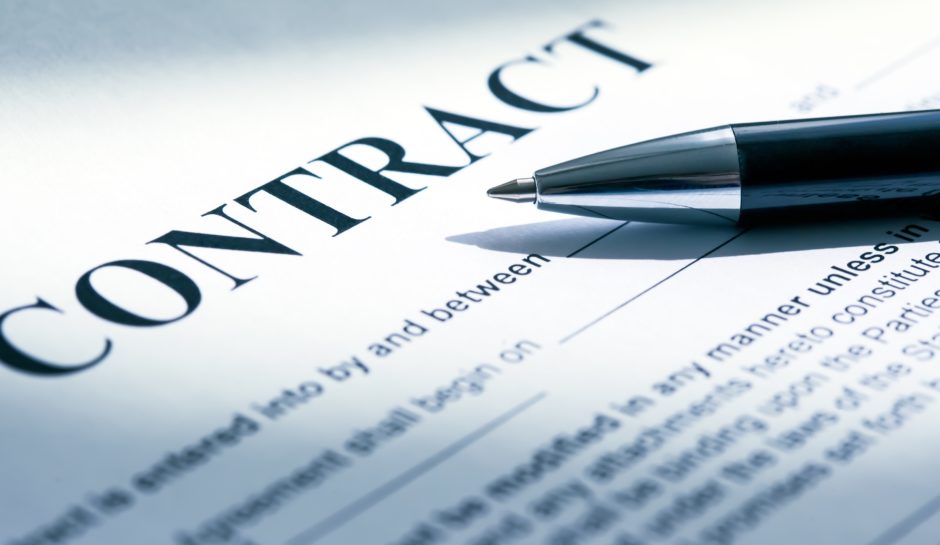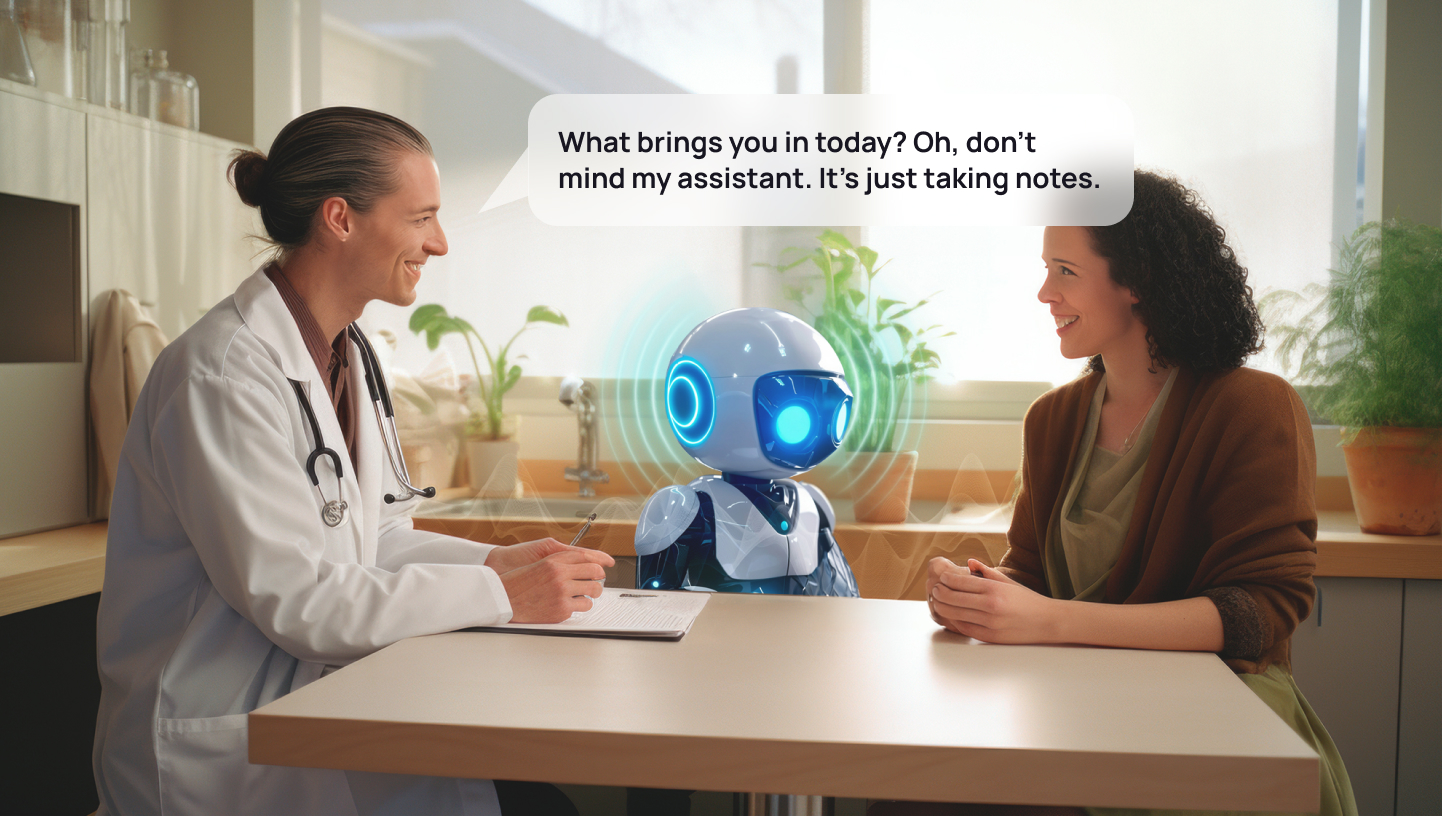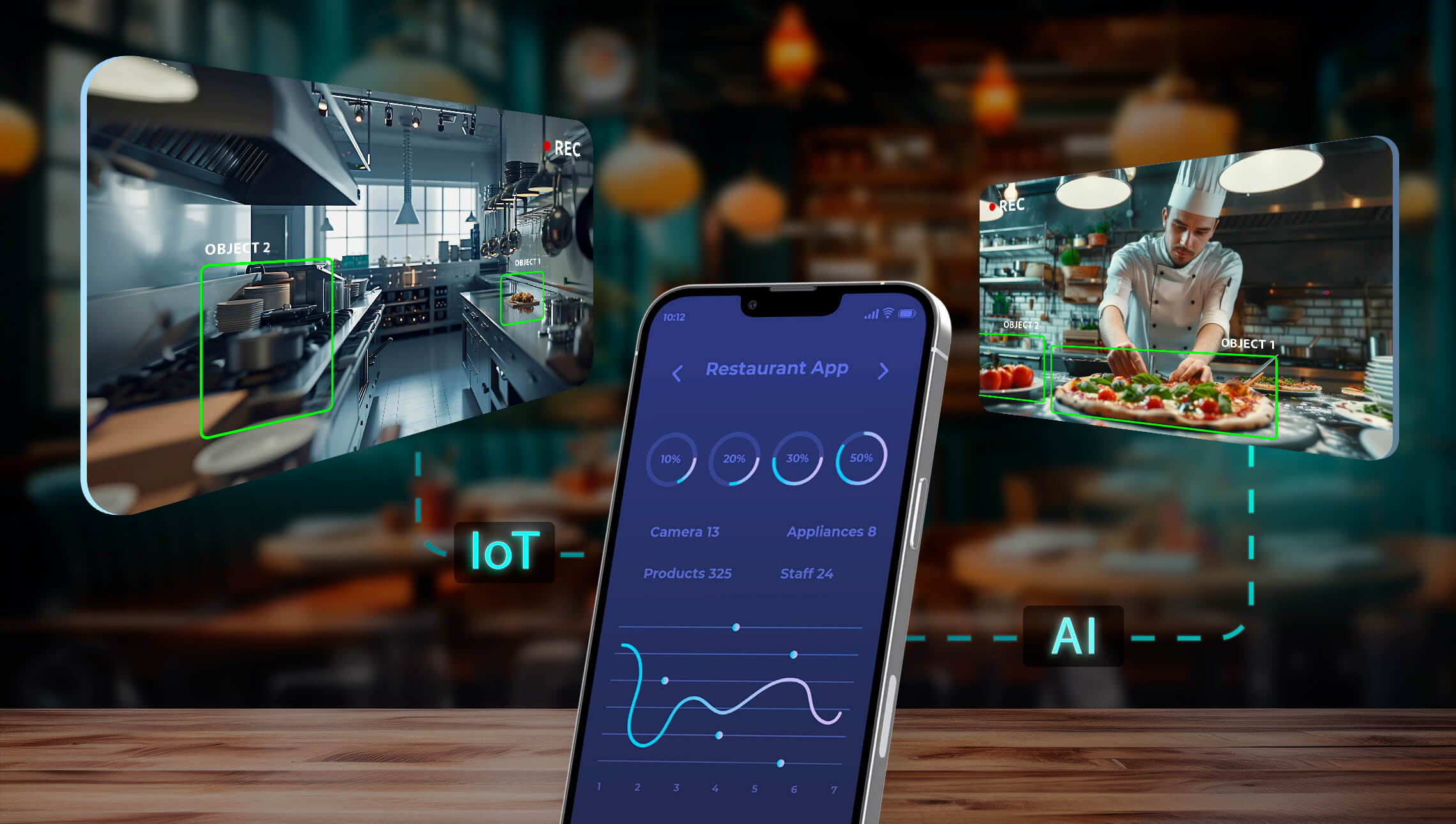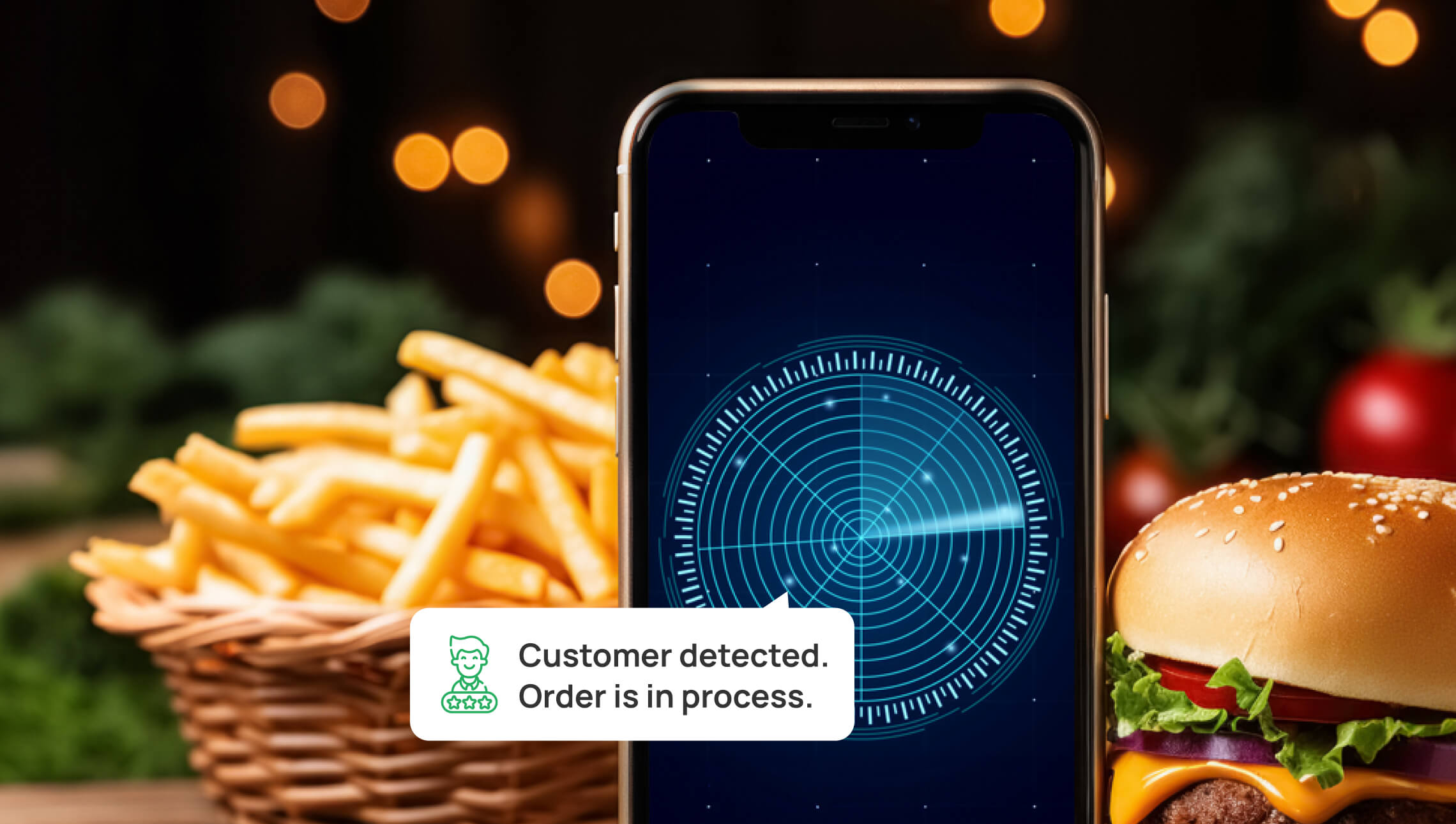Why Your Business Needs Artificial Intelligence Drones
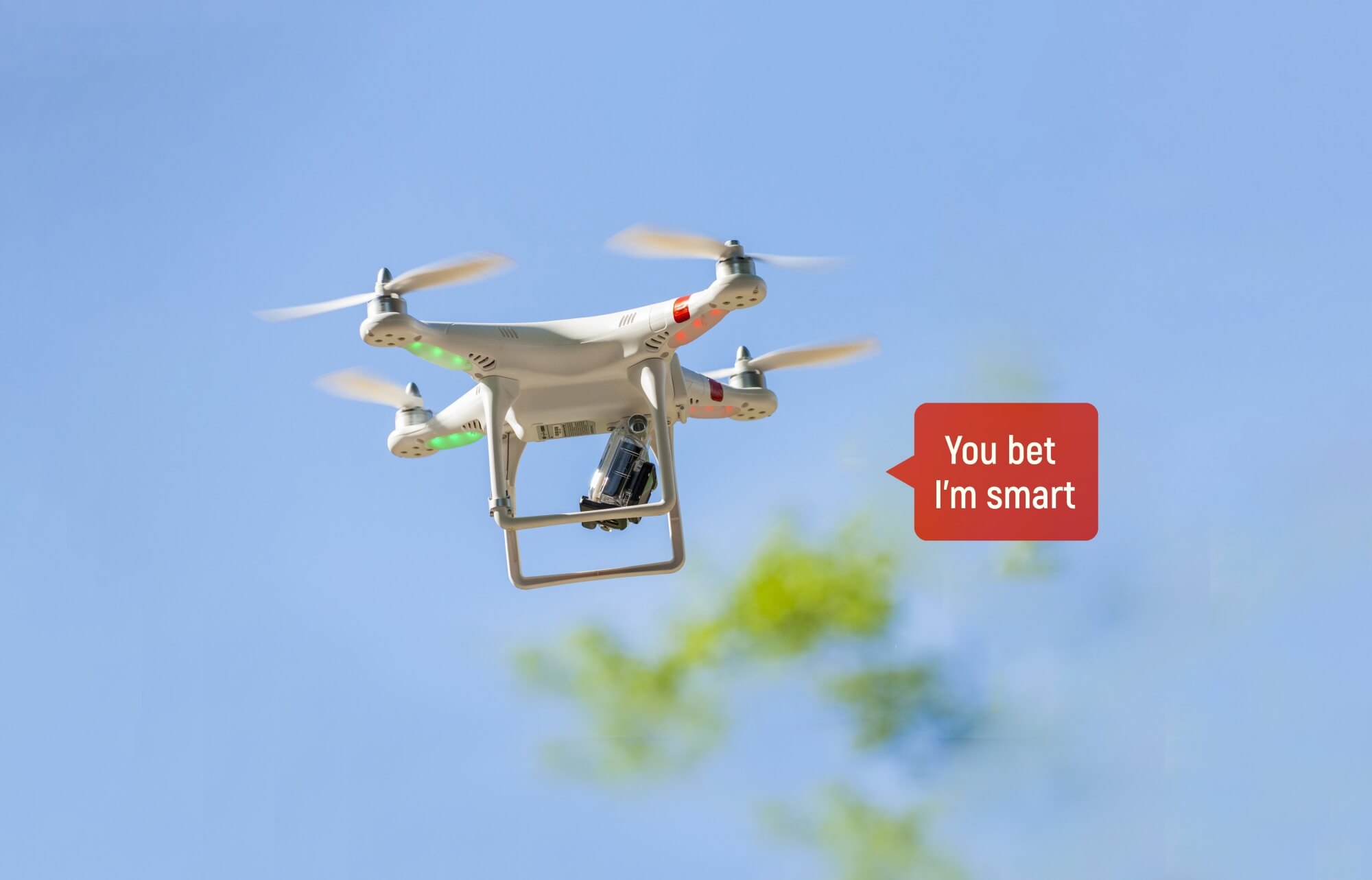
Most people think of drones as fancy high-tech devices used either by armed forces for military purposes or by hobbyists to take spectacular bird-eye pictures of landscapes, sports events, and music festivals. But this is not the case. In fact, drones are much smarter and more powerful than you can imagine. And thanks to the tandem with artificial intelligence, current-day drones are capable of more than just displaying what their cameras have captured.
Artificial intelligence drones largely rely on computer vision technology. It enables them to actually perceive and understand the environment as human eyes do. Using computer vision algorithms and deep learning models, drones can accurately identify, classify and track specific objects in photos and video streams and quickly react to what they see.
Drones with artificial intelligence are able to avoid collisions with other objects, capture information that might be missed by humans due to haste or poor visibility such as vehicle license plates numbers or small movements of the human body, even flying at a high speed, map vast areas, and create detailed 3D models of objects from 2D images using photogrammetry.
That way, artificial intelligence drones can transform raw data into the most valuable business asset that enables companies to make fast and informed decisions, enhance operations, improve communication with stakeholders, reduce risks and grow revenue.
At Softarex, we’ve singled out 4 industries in which drones are currently used most often and described what benefits AI drone technology brings to businesses.
Construction sites monitoring with AI drones
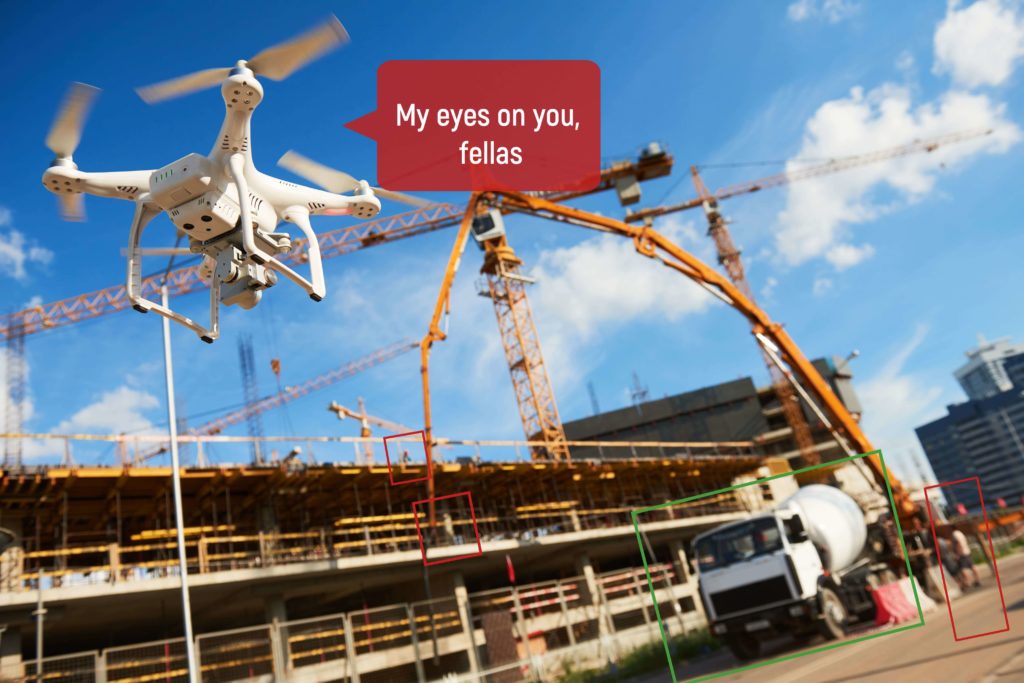
Artificial intelligence drones help construction companies get a bigger and much clearer picture of their projects. Such drones collect and quickly process accurate real-time information that can be transformed into detailed reports or, using photogrammetry methods, visualized in the form of 3D models of construction sites and orthomosaic maps. The generated data can be used on multiple stages of the construction process — from pre-planning and comprehensive surveying to project progress monitoring and safety inspection.
Using AI drones, construction companies and contractors can always stay up to date with project progress, keep stakeholders and investors informed about the latest developments, keep an eye on all equipment, material, and inventory, conduct quality inspections of the construction site regularly, and much more.
And today many construction companies are beginning to recognize the benefits of artificial intelligence in drones. For example, Clayco, the first FAA-certified design-build firm in the USA, utilizes smart technology on 100% of its construction sites nationwide.
Until 2014, Clayco used satellite imagery on-site but then switched to drones due to their ease of use. The company’s management claims that the adoption of artificial intelligence drones not only helps deliver projects more efficiently but also improves communication with clients.
AI drone-enabled farming and agriculture
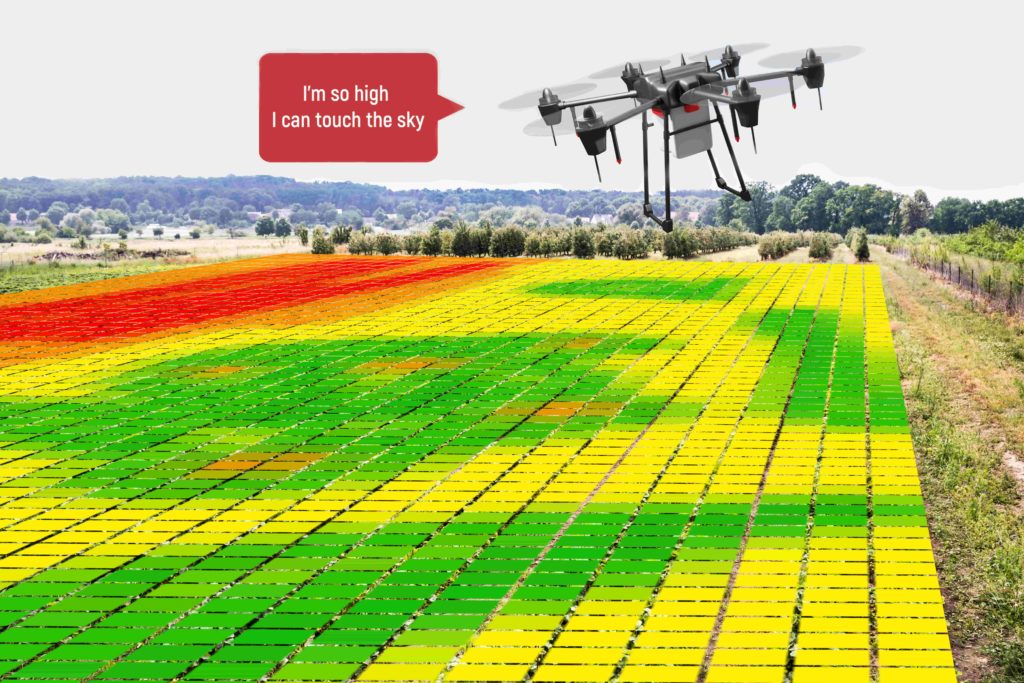
The agriculture industry is breaking into precision agriculture, a new farming management concept that utilizes new technologies to make data-driven decisions and manage crops more efficiently. As the trend grows, an increasing number of agronomists, farmers, and agriculture companies are turning to drones to optimize daily operations using real-time detailed crop insights.
Drones enable farmers to get imagery of farmland much quicker than traditional labor-intensive methods. Compared to on-foot manual shooting, they are also a safer option for mapping difficult and dangerous areas such as uneven and vast fields. They allow getting high-resolution pictures of plants and even separate plant parts to identify pests and diseases at the earliest stage.
To make better use of the generated data, farmers need artificial intelligence software that can process and analyze drone-generated information in a matter of a few minutes and visualize it in the form of maps and reports, enabling farmers to get valuable insight into their crops and make data-based decisions immediately. Having a full picture of farmland, farmers can monitor their crops remotely, identify the most suitable seeding prescriptions, make replanting decisions, assess crop fertility, plan irrigation systems, and even assess the damage caused by natural disasters.
Artificial intelligence drones have helped reduce the number of herbicides used in Brazilian soybean fields by 53.3% in the 2018/19 season. Brazilian farmers are using AI-based software that processes drone-captured images of fields, automatically identifies weed-invaded areas, and builds maps of herbicide application. The implemented solution helps significantly lower spraying costs, control weed growth locally, and protect harvests while reducing the overall environmental impact of traditional farming operations.
Artificial intelligence drones in e-commerce
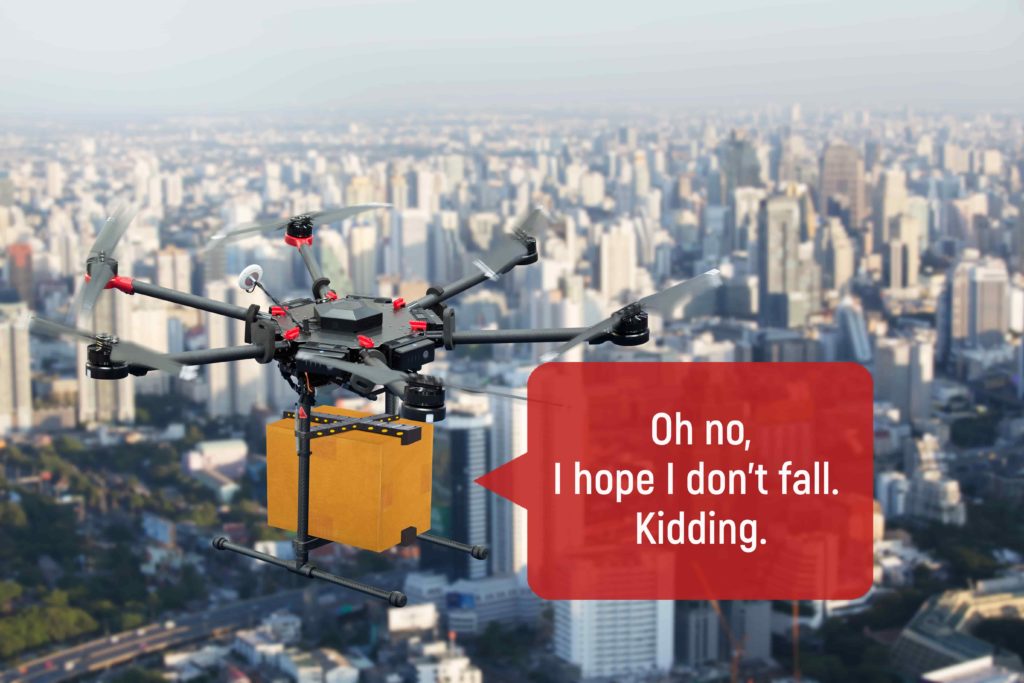
The COVID-19 pandemic has become the golden age of delivery services. To avoid getting infected with the new virus, more and more people choose online shopping over in-store one.
To keep their employees safe and meet the rapidly changing customer demands and expectations, retail giants such as Walmart, Zipline, FedEx, and Domino’s Pizza are using drone-based delivery, a much safer, quicker, and cost-effective way to transport customers’ packages without any human contact.
But Amazon has gone one step further by enabling its delivery drones, Prime Air, with AI technology. Artificial intelligence drones can actually ‘perceive’ the surroundings and react to any sudden changes immediately. To see what’s going on around it, Prime Air uses machine learning models and a variety of sensors that are located on all sides of the drone. They allow it to spot and avoid both distant objects such as oncoming aircraft and telephone wires, and close ones — buildings, trees, people, and even small pets. It helps Amazon’s AI drones navigate safely to their destinations and drop off packages carefully at customers’ doors.
The launch of unmanned delivery drones and artificial intelligence delivery is also a part of Amazon’s goal to make 50% of its shipments net zero carbon by 2030. So smart delivery drones are not only a quicker and safer but also more energy-efficient and eco-friendly alternative to traditional car delivery.
AI drones for public safety services
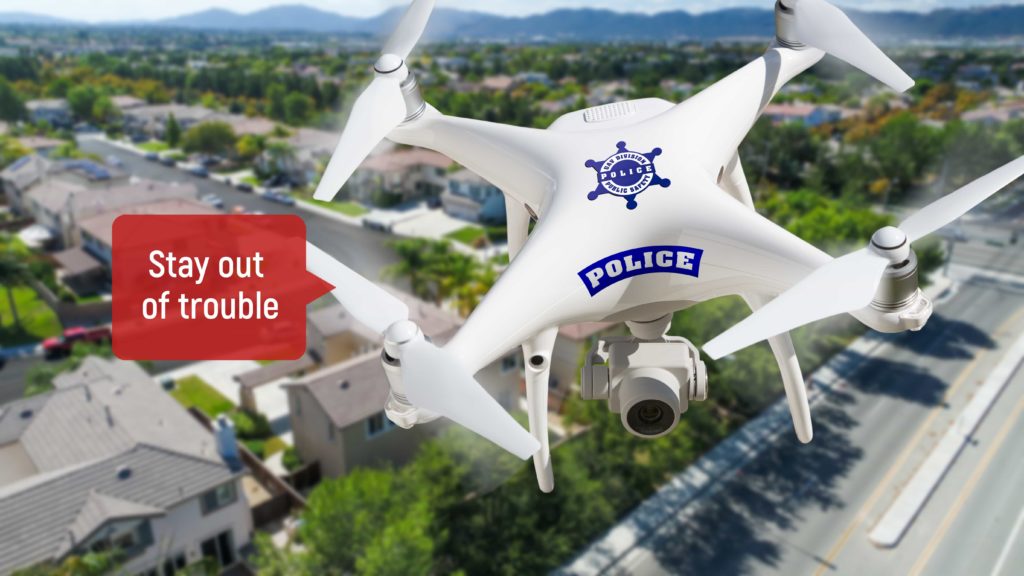
The ability of artificial intelligence in drones to identify and track objects in photos and videos in real time is being used for public safety applications. Drones powered by computer vision technology can help find a missing person quickly, locate fires, pursue and criminals, identify vehicles by models, brands, and license plate numbers, monitor and scan crowded areas for suspicious behavior and potential threats, and much more.
In the United Arab Emirates, the police are using face recognition systems to track wanted criminals. Neural network-based software fed with a felon’s photo monitors crowded city areas in real time. When a suspected target is identified, the system captures their images and scans them for matches with photos in the dataset using machine learning models. If any matches are found, the software alerts the police so that they can arrest the criminal.
Artificial intelligence drones are also indispensable helpers for public safety services during search and rescue operations. When it comes to finding a lost person in the woods or providing situational awareness in case of an earthquake, or hurricane, they can do a better job than experienced personnel. Drones can quickly capture high-resolution imagery of vast areas and analyze large amounts of data in real time with no risk to personnel. It helps reduce the number of searchers required for a mission, lower costs, and, most importantly, saves a significant amount of time when every second matters.
Public Safety Canada has launched a project to develop an AI drone-based search and rescue solution to advance and aid search and rescue missions in remote areas such as indigenous communities in Canada’s North. Thanks to the powerful integration of artificial intelligence, geospatial software, and computer vision, smart drones will allow rescue teams to significantly narrow search areas and streamline operations, especially in extreme weather conditions.
Smarten up with artificial intelligence drones
Today, data is the lifeblood of any company. Therefore, investing in a smart technology that can quickly process large amounts of information and draw helpful conclusions from it is a great way to boost business processes.
And AI drones are exactly that kind of technology. Collaboration of drones and artificial intelligence is an integration of high-resolution, real-time data and beyond-human-level intelligence for transparent and optimized operations.
Softarex harnesses the potential of artificial intelligence, computer vision, machine learning, and 3D modeling to transform the way companies collect, process, and analyze drone data.
Our engineers have a multi-year experience in the development of AI-powered software for drones across multiple industries — from manufacturing and agriculture to security and mining. We build effective and reliable solutions that help businesses make more informed farming decisions and improve crop yields, monitor the construction process remotely and safely, ensure the highest possible level of physical security, create high-resolution maps of vast areas and detailed 3D models of objects, and much more.
So if you consider implementing AI-driven drone technology to increase visibility into your business to ensure fast and data-driven decision-making and need robust software, Softarex can help.
Drop us a line to discuss your custom software development needs. Softarex’s consultants will gladly assist you with developing an AI implementation strategy for your business.


